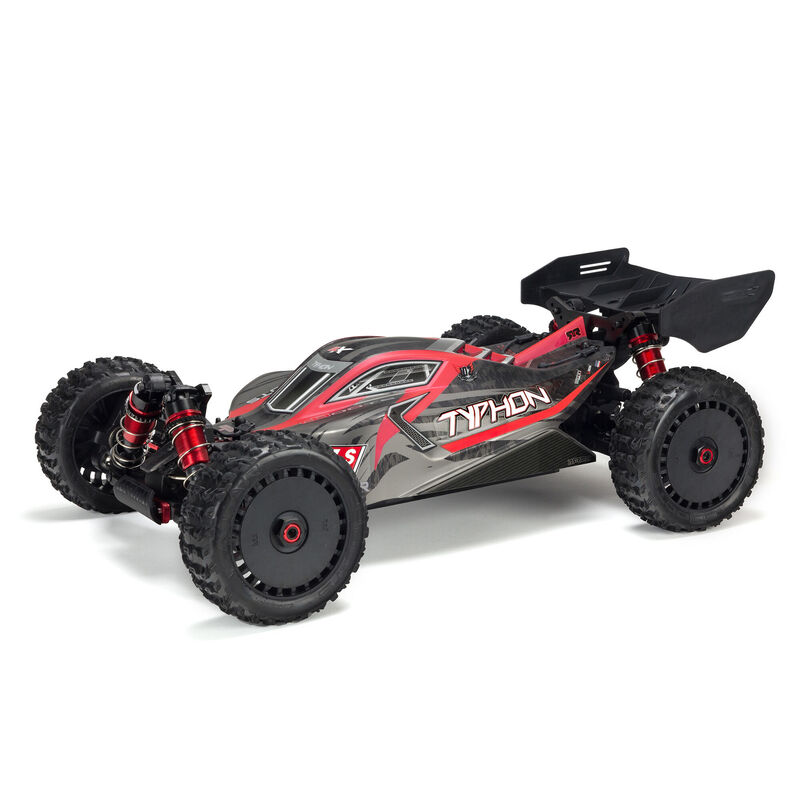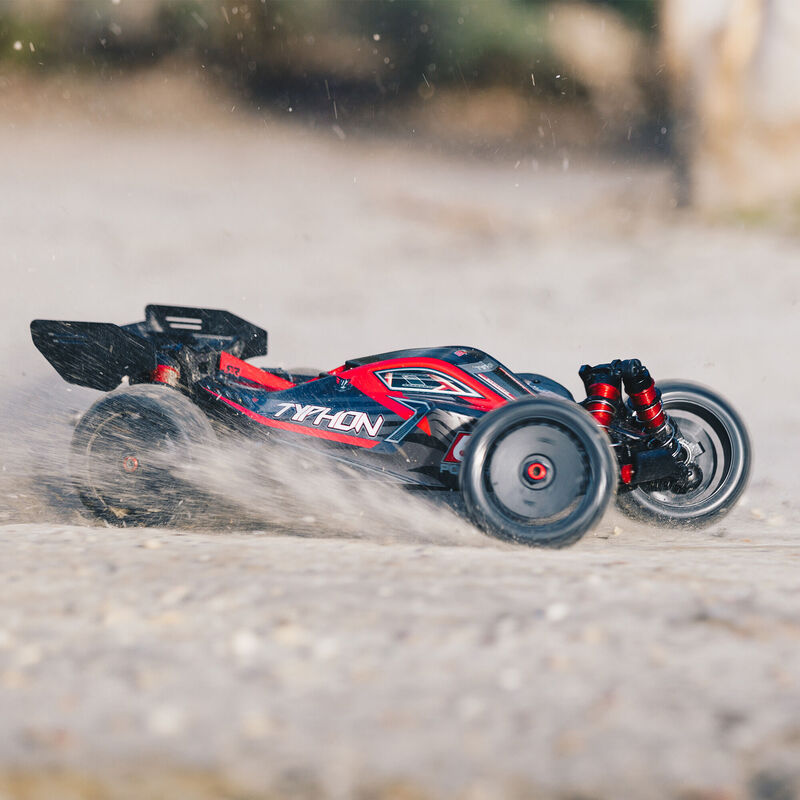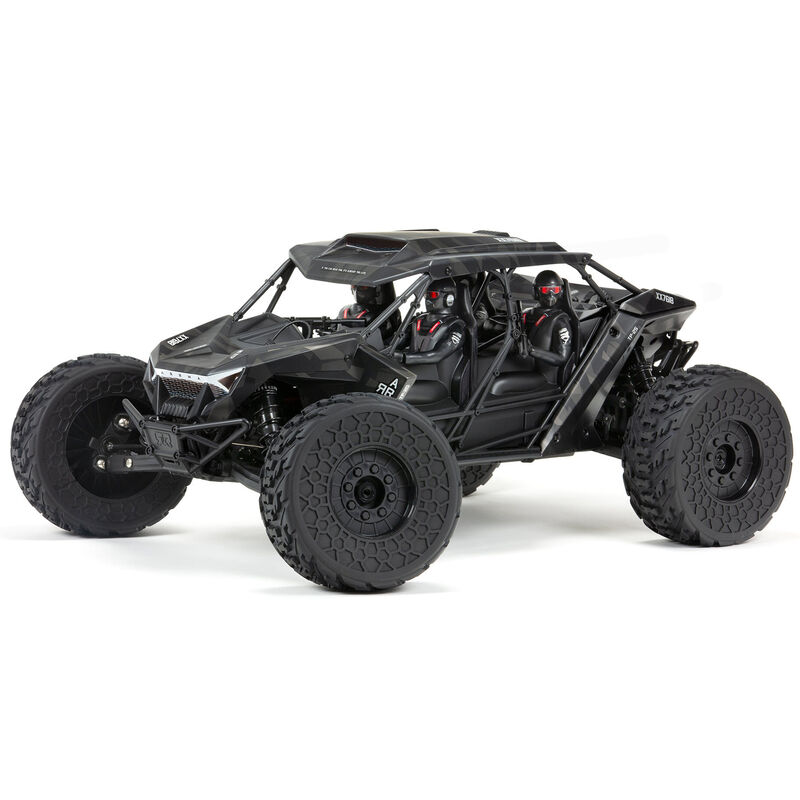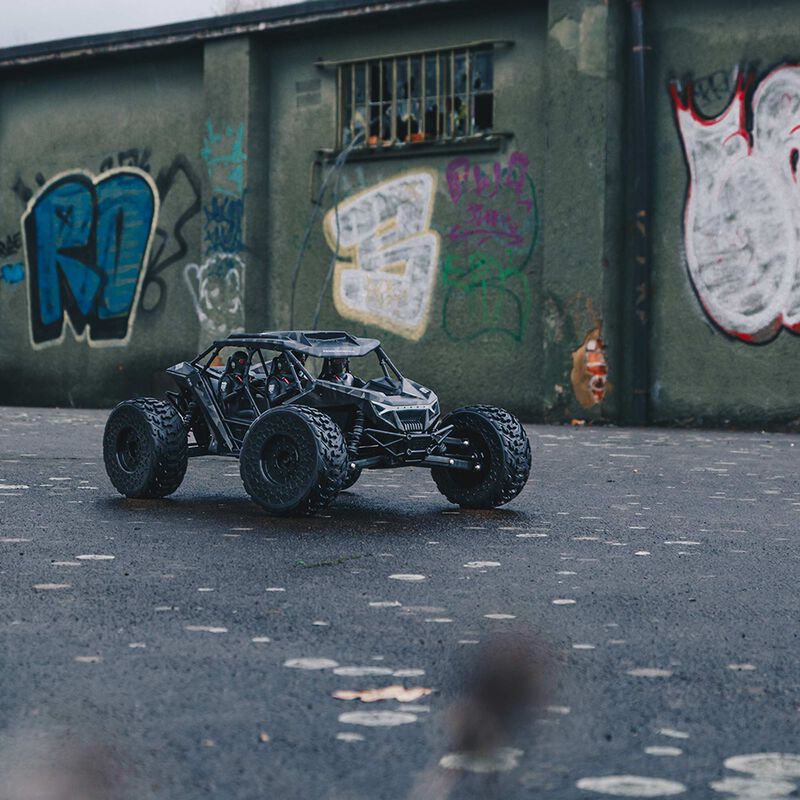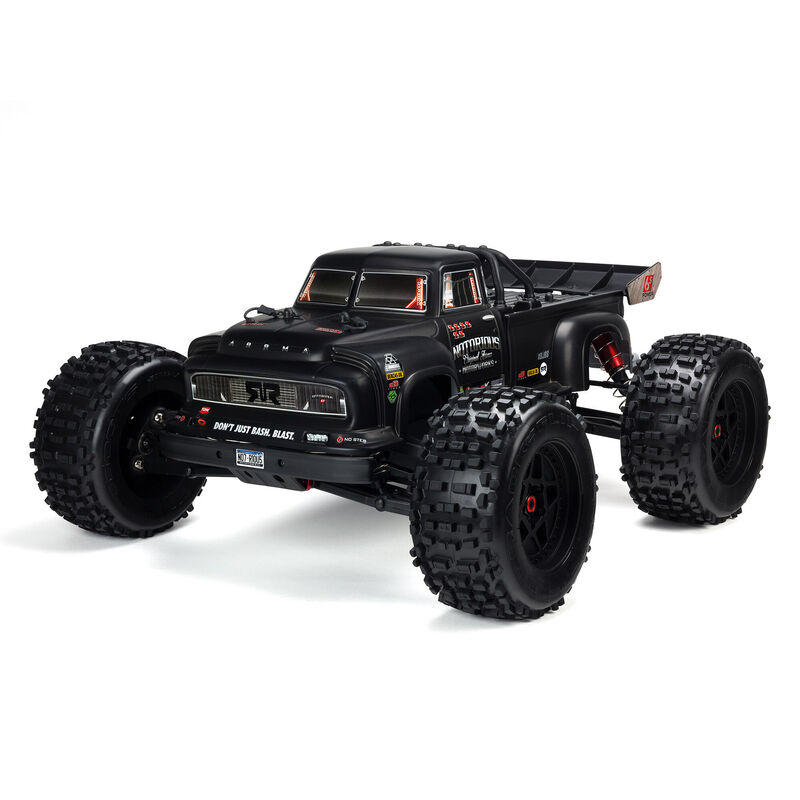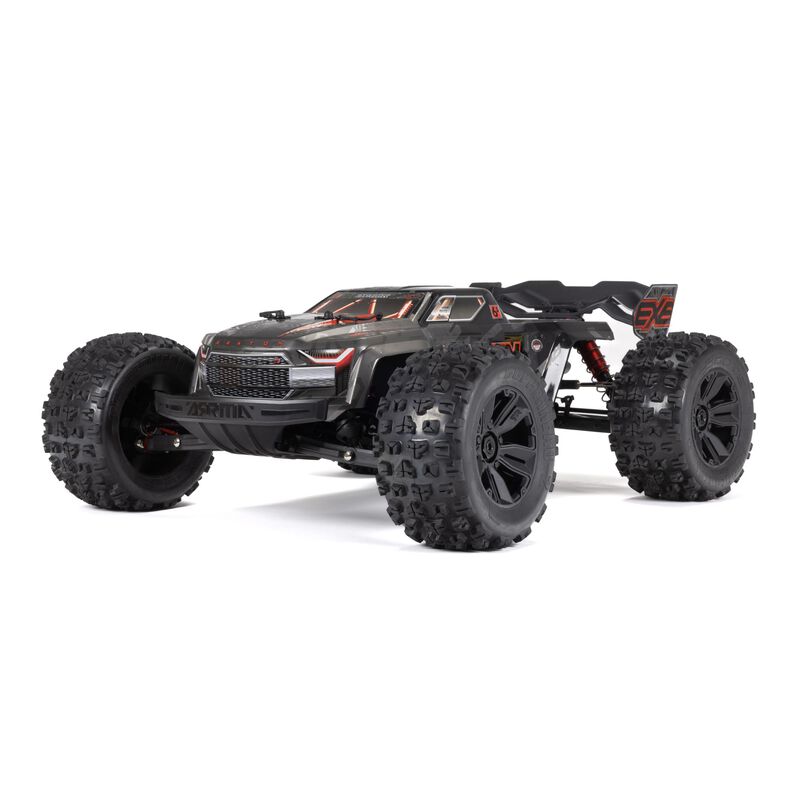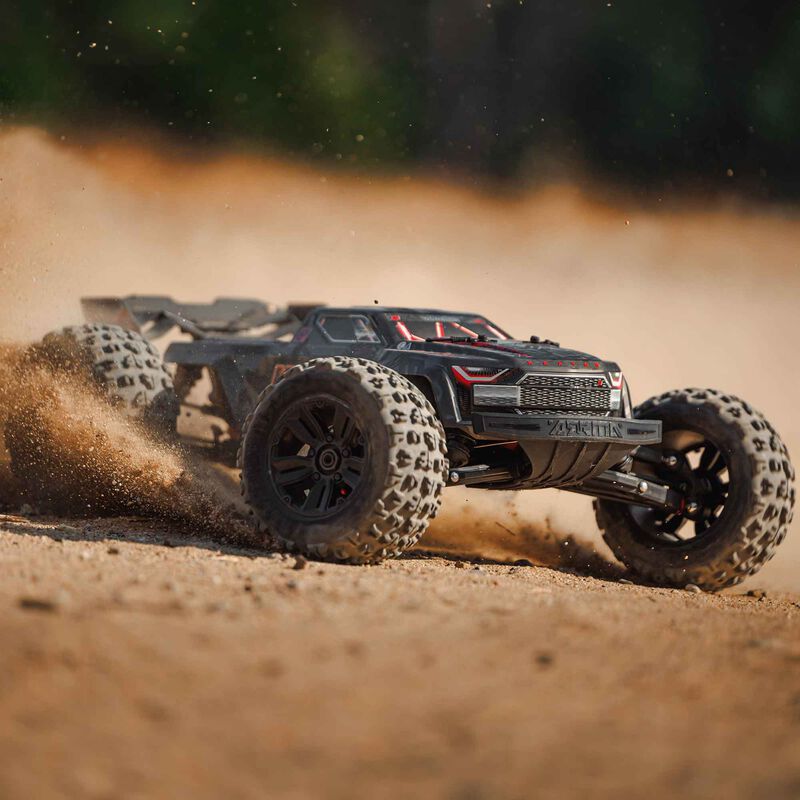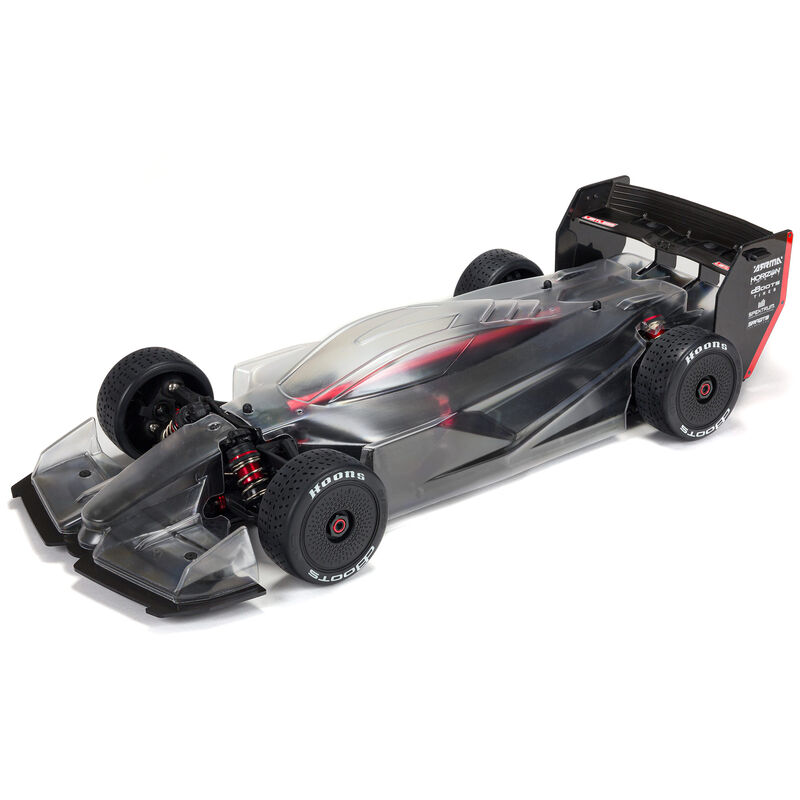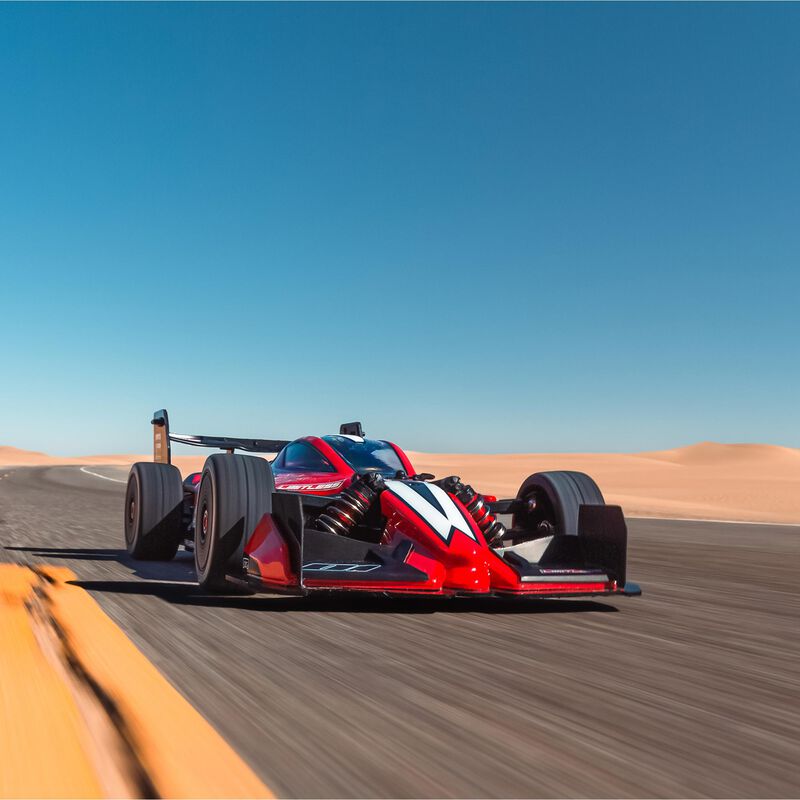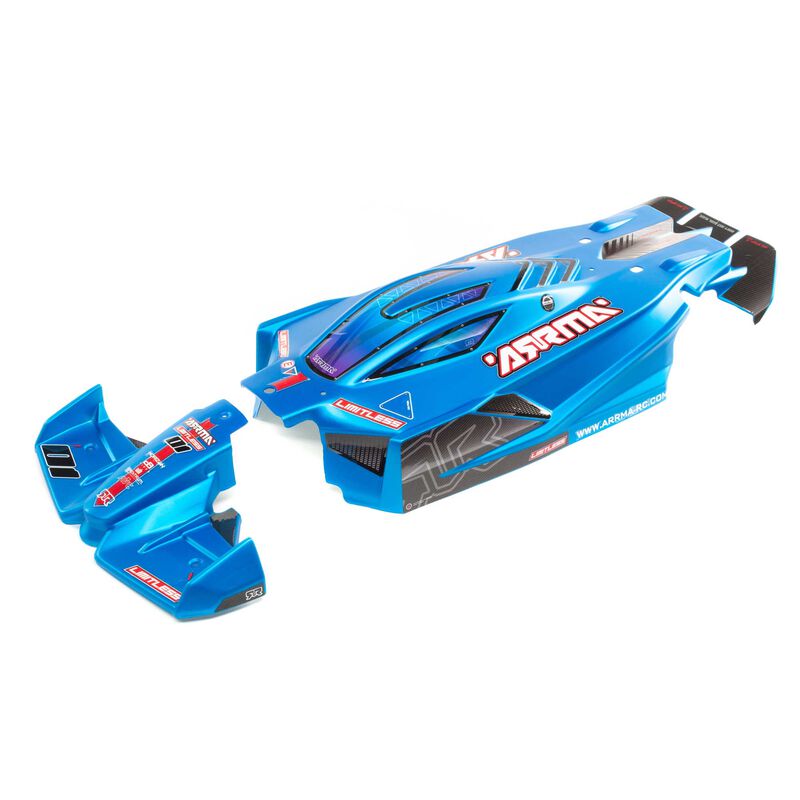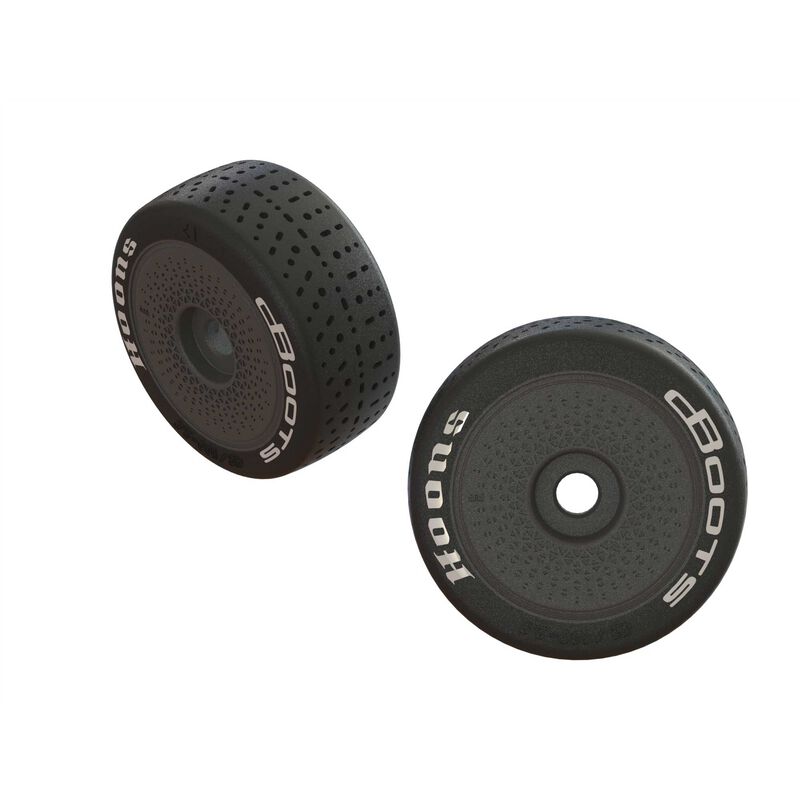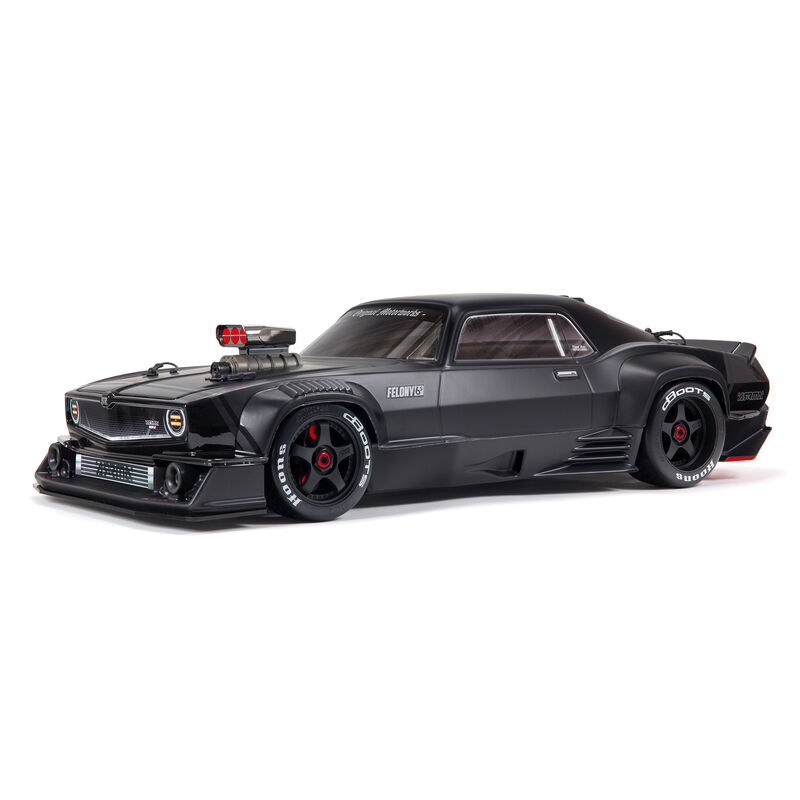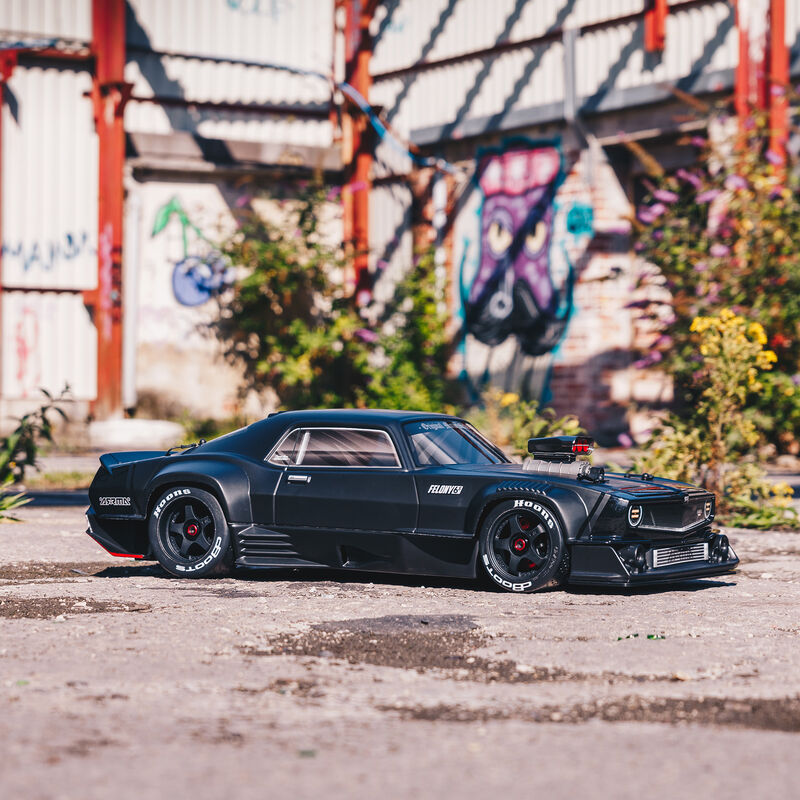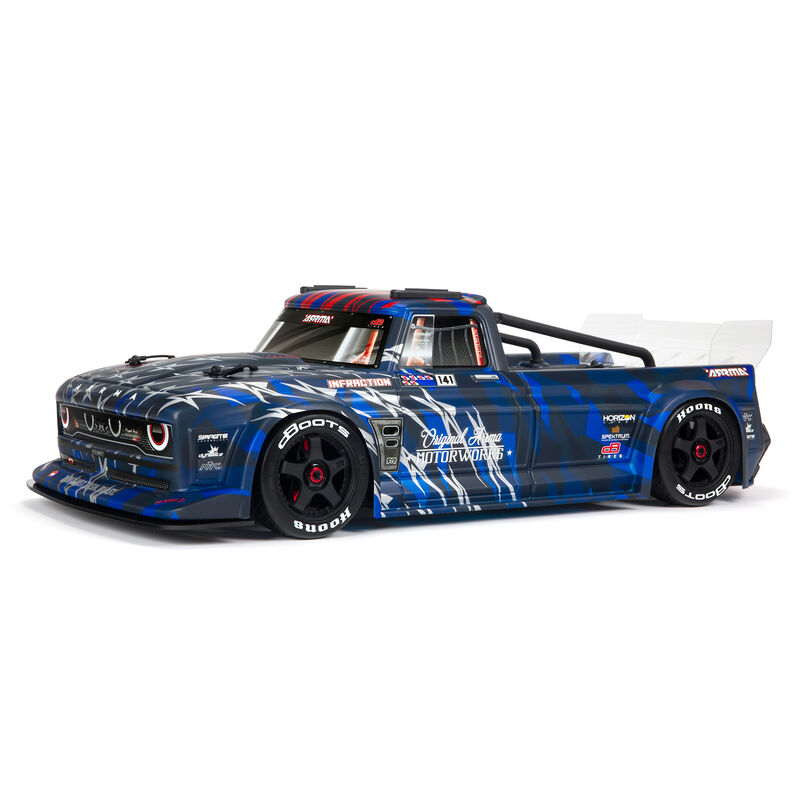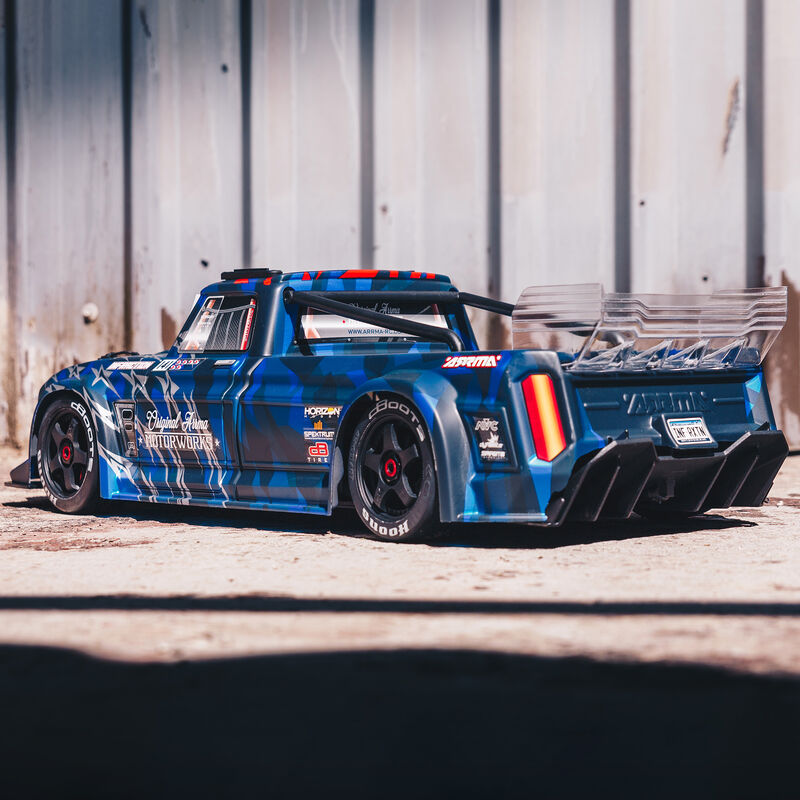Posted: 10/24/22
How Fast Can Fast RC Cars Go?
One of the first things that most people want to know about the radio control car hobby is how fast RC cars can go. The answer is, “It depends.”
The current record for fastest RC car, recognized by the Guinness Book of World Records, belongs to the electric-powered RC Bullet driven by Nic Case. On October 25, 2014, the RC Bullet lived up to its name by reaching an incredible 202.02 mph! Of course, the RC Bullet was not purchased ready-to-run. It was custom built and loaded with high-performance equipment by a skilled RC driver who knew exactly what he was doing.
In a 2021 head-to-head speed contest with a real championship-winning Formula One car, the ARRMA LIMITLESS 1/7 Scale All-Road Speed Bash Roller emerged victorious. It hit 150 mph and ran a quarter mile in just 8.6 seconds! Although the LIMITLESS rolling chassis kit comes optimized for 8S power, the driver still selects his or her own motor, ESC, battery, and radio gear. All of these determine its ultimate speed capabilities.
Now imagine you’re a new RC car hobbyist trying to drive a remote control car that moves at such high speed. Good luck! A fast RC car can be hard to control when you’re still learning how to drive RC. All RC drivers need some reaction time to avoid problems and correct mistakes. So it’s best that no commercially available RC car or truck is as fast as the LIMITLESS or RC Bullet right out of the box.
The information that follows will help you understand which factors have the greatest effect on an RC car or truck’s speed. You might not break records, but with a little experience you, too, can turn your radio control vehicle into a pretty fast RC car.
Consider this first before getting a fast RC car.
As stated earlier, speed should not be your top priority if you’re choosing your first radio control car. Instead of searching for fast RC cars, check out the sturdy RC basher vehicles that are built to survive accidents and abuse. You’ll have worry-free fun learning the basics of radio control with plenty of time later to fill your need for speed.
Even if you do have some experience under your belt, give some thought to how much speed you can really use before you spend a lot of time and money on upgrades. There’s no point in owning a 60+ mph radio control car if you don’t have the space to take it higher than 30 mph.
Also, be aware that acceleration and maximum speed are two different things. Acceleration is how quickly your RC car or truck gains speed (“Zero to 30 in X seconds”). It’s good to have fast acceleration when racing in small areas or on tracks with lots of bends. Maximum speed is the peak mph that an RC car can reach and sustain. If you have plenty of unobstructed space to run at full throttle, a high maximum speed may be more useful than quick acceleration. RC cars can be modified to improve their acceleration or maximum speed, but an increase in one often decreases the other.
So consider your experience, and where and how you expect to drive, before making any upgrades to boost the speed of your RC car. It’s also good to remember that skilled drivers can win races even with slower cars.
How to turn your vehicle into a fast RC car.
There are limits to the maximum speed that any radio control car or truck can reach. But many good, hobby-quality RC cars, with strategic modifications, can become fast RC cars capable of 70 to 100 mph top speeds in optimal conditions. Key factors that influence an RC car’s top speed include its tires, gearing, motor, and battery. Some of these can be upgraded fairly easily and affordably.
Match tires to the surface for more speed.
Loose and uneven terrain can significantly slow down an RC car. So can wet or damp surfaces. You can instantly improve your RC car or truck’s ability to go fast and handle well by making sure its tires are well-matched to the surface conditions.
RC cars usually perform best on smooth, flat surfaces when using slick tires. On grassy, wet, and muddy terrain, spiked tires provide a better grip. For all-terrain traction, mini spike tires offer a good compromise between slick and spiked treads.
Modify your pinion and spur gear.
One of the easiest ways to make your RC car go faster is by changing its pinion and spur gear. Your choice of gearing can either boost maximum speed or increase the acceleration.
For faster acceleration, choose the smallest pinion gear you can find and the largest spur gear. As explained earlier, you’ll be giving up some top-end speed with this setup. For a faster maximum speed with slower acceleration, go for the largest pinion gear and the smallest spur gear.
Upgrade your motor from brushed to brushless.
For the most part, only beginner-level RC cars and trucks now come equipped with brushed motors. While brushed motors keep costs down, their design causes friction that reduces performance. Brushless motors are more expensive, but they’re also 10-15% more energy efficient and thus more powerful. If you want a fast RC car, swap out that brushed motor for brushless.
Switch from NiMH to LiPo batteries.
Two kinds of batteries are commonly used in RC cars, NiMH (Nickel-Metal Hydride) and LiPo (Lithium Polymer). Like brushed motors, you’ll most often find NiMH batteries in beginner-level, ready-to-run RC cars and trucks because they’re less expensive and easier to use safely. But if speed is what you’re after, LiPo batteries are a must.
LiPo batteries have a higher discharge rate and larger energy density. They increase the power supplied to the motor and give your RC car a steady voltage throughout its run, while the voltage of NiMH batteries gradually declines. If maintaining consistent speed is a must, LiPo batteries are the way to go.
More voltage generally means more speed, but each RC car’s power system has a defined voltage limit. If you upgrade to LiPo, make sure your system can handle the higher voltage. Using an incompatible battery could potentially fry your electronics.
Not all fast RC cars are created equal.
“Fast” is a relative term in the RC car and truck hobby. RC rock crawling, for example, challenges the driver to negotiate extremely difficult off-road trails filled with rocks, logs, and even shallow streams. Given what rock crawlers do, going fast is far less important than being durable and able to maneuver well. Most RC rock crawlers have a top speed of around 10 to 20 mph. A fast RC rock crawler might reach 40 mph at best.
RC drag cars, on the other hand, are intentionally configured for short bursts of very high speed. Fast RC drag cars accelerate quickly to top speeds of 60 to 70 mph. Some go even faster. They’d be useless at rock crawling but rule on the asphalt!
The beauty of the radio control car and truck hobby is that there’s an RC vehicle to recreate almost any type of full-scale motorsports. So if going fast and furious is what you love, rest assured there are many ways to enjoy fast RC cars and get your motor running!
